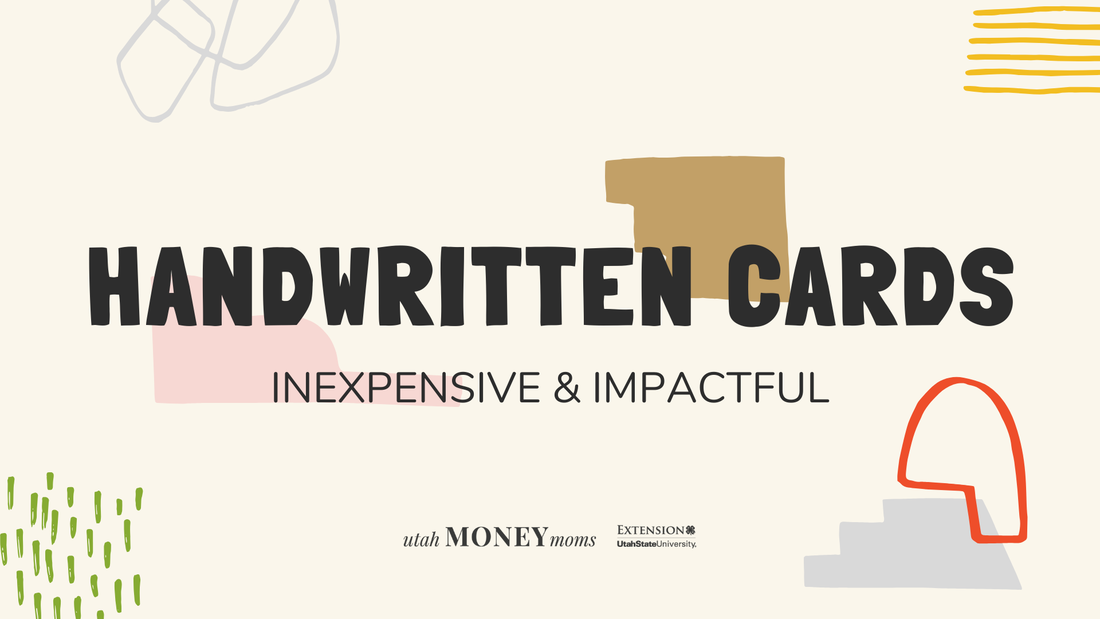|
Andrea Schmutz, USU Extension Assistant Professor  Has anyone ever told you to “beware of the camel’s nose”? Just the other day, as I was telling my teenage son about a situation and how I was planning to handle it, he looked at me and said very seriously, “Be careful mom, you’re letting the camel’s nose in the tent. Are you sure you want to do that?” His comment caught me off guard but his wisdom caused me to rethink my plan. He was referencing one of my favorite fables with a universal message that can be applied to almost any situation. As I pondered his response, I suddenly realized that the camel provides a great analogy for budgeting and spending habits, especially as we enter the winter holiday season. In case you are not familiar with the story about the camel in the tent, or if it’s been a while since you’ve heard it, let me share it with you. As with any fable, there are many versions, but this one is my favorite:
0 Comments
Vincenza Vicari-Bentley, AFC USU Extension Empowering Financial Wellness Program Coordinator  It’s a new year and with that comes new goals, fresh starts and perspectives. In 2020 Americans racked up $601 billion to run the total U.S. household debt to record-shattering $14.15 trillion. So here we are in 2021 (and maybe looking at post holiday spending?). Have you been thinking about if you’re carrying too much debt? When it comes to the question of how much debt is too much, there are as many answers as there are people. Basic answer: It all depends on what you can afford. How do you figure out what you can afford? It’s called a Debt-to-income ratio or DTI. Whether you make $500 a week or $500 an hour there is a standard formula lenders use to determine when debt can become a problem. Amanda H. Christensen, AFC USU Extension Associate Professor; Utah Money Moms Editor  I know you've seen it...many retailers are already promoting Black Friday deals and will continue to bombard us with a barrage of ads all month long. I've already started to feel a little FOMO. But before we jump the gun and dive in to holiday spending in 2020, I'd recommend a few things to help us stay savvy shoppers this season. Tip 1: Starting early can help you spread holiday costs out over a few months rather than everything hitting your bank account in December or January. This also helps with our efforts to give thoughtful gifts-which is always our intention-but sometimes we run out of time and simply pull the trigger on something less meaningful or more expensive than we'd have hoped. Start early, check things off your list and unplug from the holiday hub-ub to enjoy the reason for the season. Tip 2: Create a holiday spending plan. Don't forget to include the gift exchange at work or any neighbor gifts you'd like to give out. Traditional activity's may have costs associated with them so don't forget that either. Once you've listed everything, set a per-person (or per activity, etc.) spending limit. I like to use a free app like Santa's Bag (or something similar) because it helps me easily track my per-person spending and visually shows me my progress. What a per-person spending limit does is helps me focus on getting the best bang for my buck within that spending limit. Tip 3: Keep good records such that if an item you’ve purchased goes on sale at a better price later in the season, you can be a savvy consumer and return the item or ask for the difference in store credit. As for physical receipts, during the holiday season I make space for them in my coupon/gift card organizer that’s in my purse and always with me. Digital receipts can be difficult to track as they can get buried in your email. It’s as simple as creating a “Christmas 2020” email folder and dragging all online order confirmations into that folder. Tip 4: A savvy consumer takes advantage of the sales and knows when to stop spending. The "good deals" will keep coming. We'll be bombarded all through December as well so once you've reached that per-person spending limit and checked everything off your list, be done. Unplug. Last-minute impulse buys can be budget busters! The sale season is only working for you if you don’t continue to buy, buy, buy. GUEST CONTRIBUTOR: KATHY RIGGS, USU EXTENSION PROFESSOR  Meaningful graduation gifts - Must they have a price tag attached? It’s again the time of year when graduation announcements begin to fill up mail boxes and social media pages. Though most graduates will experience a non-traditional ceremony this year, friends and family will still wish to acknowledge the hard work of high school, college or technology school graduates. However, with financial strains placed on many families, it can be difficult to know how much to spend and what type of gift will still be meaningful with less discretionary funds available. Some may still consider giving a laptop, new smart phone or car. However, these can be very expensive and out of reach for many parents, especially when finances may be stretched just to cover basic necessities. However, this is a great time to share some sound financial advice-- which may be the most useful “food for thought” gift a parent can give. It may be that going to a quiet spot to share a favorite take-out meal will help the advice to be easier to share and easier to accept. For parents: Six possible financial management strategies to consider sharing: GUEST BLOGGER: CALLIE WARD, USU EXTENSION ASSISTANT PROFESSOR  When was the last time you wrote a letter? Or Thank You? Even a nice Post it? I remember the excitement of a pen pal letter coming to our mailbox or seeing the colorful envelop with Grandma’s handwriting on it, and I am not that old! Have we truly lost the art of the handwritten note? With May comes graduations, end of year teacher gifts, Mother’s Day, the final arrival of Spring for most of us in Utah, it is a time of new life and sometimes the never-ending gift list. So why can’t we go back and save this valuable custom of a handwritten card? I turned 33 in April, and birthdays stopped being cool after 16, (anyone else?) but every year I receive two things. A card from my mom - this one usually has a sheep or cowboy of some sort on it and one from my little sister. This year specifically, it was the one from my sister that made my day and was one of the best gifts I have every received. She took the time to write something special and included some great memories. She spent less then $5 and had me rolling for the whole day, adding more joy for my birthday. How can something so cheap be so impactful? Especially in our busy world, taking the time to send a handwritten card means more than a dollar store gift or that random gift card. An article I read from Forbes magazine shared three benefits of a handwritten thank you note that can easily be benefits of a handwritten card: |
TAKE A FREE CLASS!Host a ClassamandaSharing real-life money smarts to help you stay on track with financial goals while still enjoying life! Follow the fun on InstagramAS SEEN ONawardsBest of State 2022 & 2023: Personal Finance Education
1st Place National Award in Social Media Education from the National Extension Association of Family and Consumer Sciences
Gold Award in Blog Site category at the 7th annual Education Digital Marketing Awards.
Platinum Award in Digital Media, Web Design category at the International Marketing and Communication Awards.
Categories
All
|












